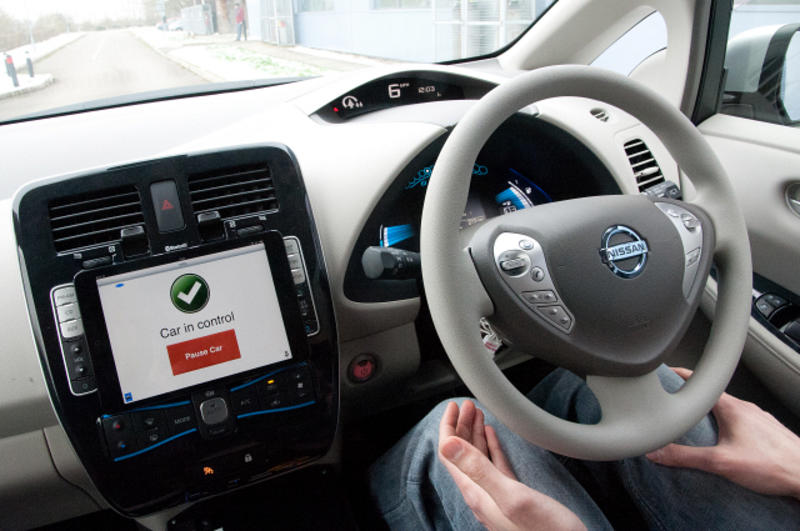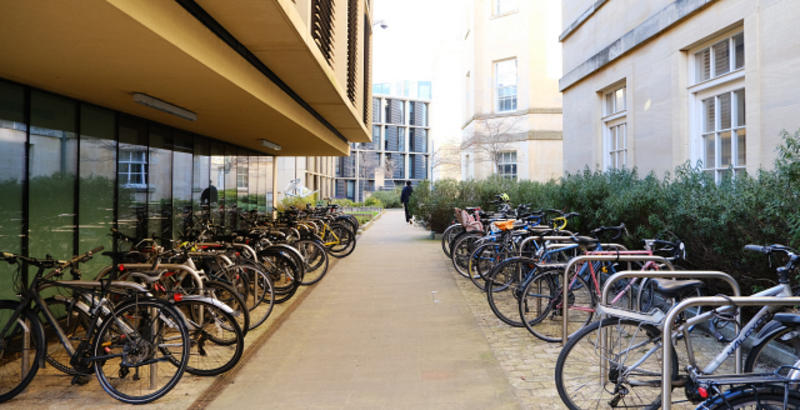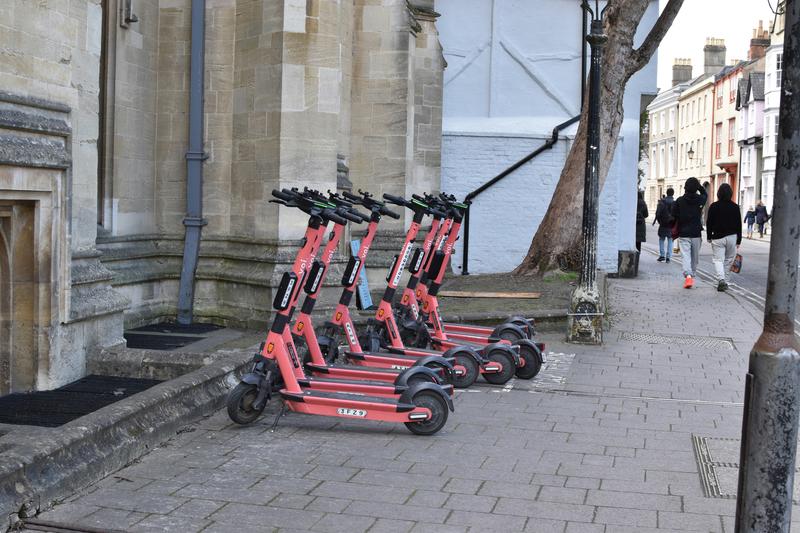Occupational road safety
Information on how to manage road safety risks
Driving and riding for work are among the highest-risk tasks we undertake in our working lives. The University’s Local Transport strategy identifies Priority 1 as 'Reducing road related deaths and injuries in and around Oxford'.
Beyond the risks faced by those driving or riding, incidents and collisions are more likely to result in the injury or death of more vulnerable road users who are not directly involved in the driving activity, such as pedestrians.
Driving and riding for work is considered a work-related hazard, therefore the University has a duty to manage these risks effectively. This includes safeguarding both our employees and any other individuals who may be affected by our work-related road use.

©OUImages/John Cairns Photography
The Safety Executive Group policy (S1/25) and supporting guidance has been developed to assist divisions, departments, line managers, supervisors and employees in understanding their responsibilities regarding the management of road safety risks. An implementation toolkit has also been provided to support heads of division and their divisional safety committees in the communication and implementation of this policy statement.
This policy applies a PLAN-DO-CHECK-ACT approach to ensure road safety risks are managed, monitored and continuously improved.

© University of Oxford Images / Public Affairs Directorate
If you or your team travel by road for work purposes, and/or you operate vehicles that are owned, hired or leased by the University, you should include occupational road travel in your general risk assessment.
To fully understand what you need to do, you firstly need to identify the profile of your vehicles and drivers/riders. This may require some research and assistance from others within your department and from other departments such as the Insurance Team and Finance.
Generally, your profile will fall into either or both of these categories:
| Fleet type | Definition | Examples | Controls |
|---|---|---|---|
| Grey Fleet | Workers that use their own vehicles for work purposes |
|
|
| University Fleet |
Vehicles owned, leased or hired directly by the University Note: students driving University owned, hired or leased vehicles are to be managed the same way as an employee |
|
|
Once your profile is identified you can carry out your risk assessment to include the following in line with Health and Safety Executive guidance:
- Overview
- Plan and manage journeys
- Make sure drivers and riders are safe
- Look after your workers’ health
- Make sure drivers and riders are safe
A Vehicle Requirement Matrix has also been devised to assist with identifying licensing, insurance, maintenance and training requirements for specific types of vehicle being operated.
Also consider items such as:
- welfare arrangements
- personal protective equipment
- breakdown and emergency arrangements

Your risk assessment should identify what competencies vehicle operators need to have, including licencing requirements. These competencies should be included in job descriptions to ensure that competency is considered in the recruitment process and as a role develops.
Additional training may be considered for drivers or riders who undertake higher risk activities, such as those who drive daily, drive complex vehicles, drive multiple passengers, or regularly drive long distances.
If additional training is necessary, departments will need to resource its provision.
The following training is available within the University:
Examples of additional training and assessments:
- Driver Training Solutions | Products & Courses | IAM RoadSmart
- Advanced driving and riding courses | IAM RoadSmart
- Minibus - Find your local MiDAS Provider | Community Transport Association
Further information is provided in the guidance section.
Relevant University policies and resources
- University Travel Strategy
- S3/24 – Safe storage and charging of Electric Powered Personal Vehicles (EPPV)
- S1/15 - Transport of dangerous goods | Safety Office
- Injuries and near miss reporting - IRIS
Fleet management policies and resources
- University motor insurance registration and management
- Checking UK and overseas driving licenses
- Inform Insurance Team if driver of University vehicle with 6 points or more
- Driving licence categories
- Insurance and MOT requirements for business use of private vehicles
- Car/vehicle maintenance guidance - Highway Code
- Commercial vehicle safety and maintenance
- Driving and medical conditions - GOV.UK (www.gov.uk)
- Goods vehicle licensing guide (for laden vans gross weight exceeding 3500kg, or unladen weight of more than 1525kg)
Specialist vehicles
- Agricultural vehicle licences, tax information and fuel - GOV.UK (www.gov.uk)
- Code of Practice: automated vehicle trialling and self-driving vehicles
- DVSA recommended towing training for towing with Category BE
- Towing with a car: what you can tow - GOV.UK
Example documents
- Example Driver Handbook
- Example Rider Handbook
- Example pre-use vehicle checklist
- Example ROSPA bicycle checklist
HSE and external guidance
- HSE driving and riding safely for work guidance
- National Highways Safe T.R.I.P. campaign - share with drivers
- How to check your vehicle - National Highways
Financial assistance
- Green Travel Fund
- Oxford Mutual Ltd – Risk Management Funding - for projects such as practical driver training and funding of vehicle safety systems
Highway Code
- Highway Code
- Pedestrians
- Road users requiring extra care (hierarchy of vulnerable road users)
- Rules for cyclists (59 to 82) - guidance - GOV.UK
- Rules for motorcyclists (83 to 88) - guidance - GOV.UK
- Powered wheelchairs and mobility scooters
- Breakdowns and incidents (275 to 287) - guidance - GOV.UK
Relevant University and resources for riders
- Vision Zero - cycle and scooter safety
- Free cycle training for staff and students
- Reporting a cycling hazard - University Estate and public highway
- Safety and security guidance, such as lights, helmets and locks
- Oxford cycling incident hotspots
- Find your route - planning on road and traffic free routes
- Bike repair and servicing


